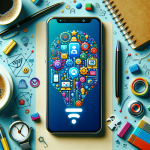
Battery Tech in 2025: Fast Charging, Solid-State Batteries, and Future Trends
Battery Tech in 2025: Fast Charging, Solid-State Batteries, and Future Trends
The energy landscape is shifting dynamically. By 2025, battery technology is set to undergo significant evolution, enhancing performance, efficiency, and sustainability. This article will cover major advancements in fast charging technologies, the rise of solid-state batteries, and emerging trends that are reshaping the industry.
Prerequisites
To fully grasp the advancements we’ll discuss, having a fundamental understanding of current battery technologies and their implications in everyday devices is beneficial, especially:
- Basic knowledge of lithium-ion battery technology.
- Familiarity with electric vehicles and their charging systems.
- Awareness of energy storage applications in renewable energy sources.
Section 1: Fast Charging Technologies
Fast charging is not merely about speed; it’s about improving user experience while ensuring battery longevity. Major developments expected by 2025 include:
- High-Power Charging (HPC): Technologies like 800V charging systems will reduce charging times significantly. Companies like Porsche are leading in HPC, enhancing user convenience on the go.
- Dynamic Battery Management Systems: These systems optimize charging cycles and enhance efficiency to prevent overheating.
- Wireless Fast Charging: Efforts in improving resonance technology will enable faster wireless charging solutions, targeting compatibility with more devices.
Section 2: The Shift to Solid-State Batteries
Solid-state batteries are becoming a game changer in battery technology. Here’s why:
- Increased Energy Density: Solid-state batteries can hold more energy in a smaller space, which is crucial for electric vehicles (EVs) and portable electronics.
- Safety Enhancements: These batteries reduce risks of fires associated with traditional lithium-ion cells by eliminating flammable liquid electrolytes.
- Longevity and Lifecycle: Solid-state batteries promise longer lifespans and more charging cycles, directly impacting the sustainability of battery usage.
- Key Players: Companies like Solid Power are at the forefront, working to commercialize these batteries by 2025.
Section 3: Future Trends in Battery Technology
Looking ahead, several trends are anticipated to shape the battery landscape:
- Recycling and Sustainability: As battery usage increases, so does the need for sustainable practices. More companies are prioritizing recycling programs and developing methods to recover precious materials from old batteries.
- Integration with Renewable Energy: Batteries will play a crucial role in energy storage for solar and wind power systems, aiding in energy distribution and optimizing usage.
- Wireless Charging Infrastructure: Integration of this technology in urban planning can revolutionize how we charge our devices and vehicles.
Troubleshooting Common Issues
As with any technology, users may face challenges:
- Heat Management: Monitoring and managing heat levels during fast charging is crucial to avoid damage or battery degradation.
- Compatibility Issues: New charging technologies may not work seamlessly with older devices; ensuring compatibility can be vital for user satisfaction.
Summary Checklist
- Understand the benefits of fast charging technologies.
- Explore the potential of solid-state batteries.
- Stay updated with emerging trends impacting battery technology.
- Consider sustainability and recycling in your battery usage.
As we approach 2025, battery technology will undoubtedly reshape our expectations regarding power management and energy use. Be prepared to embrace the innovations on the horizon.
For more insights related to technology trends, be sure to read about Next-Gen Mobile Technologies.














